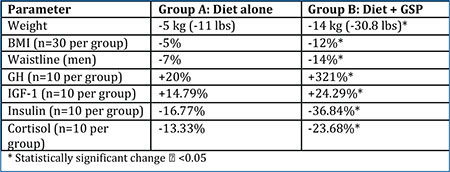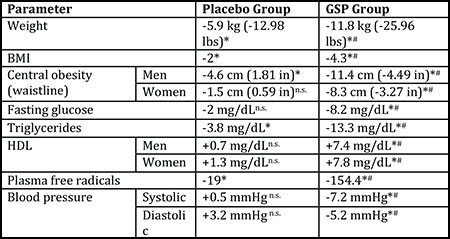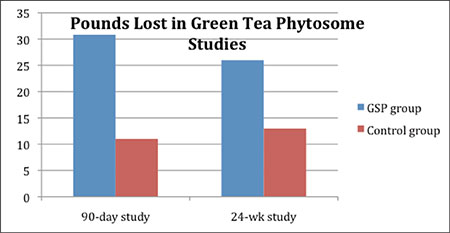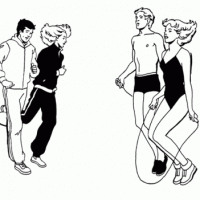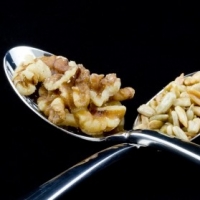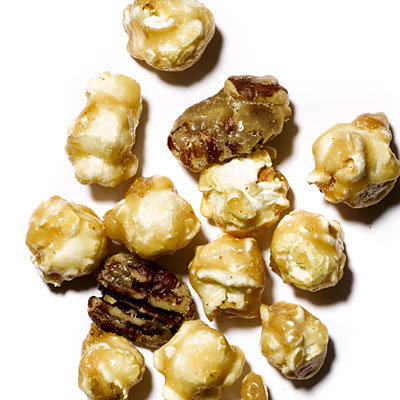Green Tea PHYTOSOMES for Weight Loss

Green tea has been consumed for more than three thousand years for both its refreshing and health promoting benefits. In fact, research demonstrated that the polyphenol catechins in green tea gives it biological and medicinal qualities, including its anti oxidant, antimicrobial, blood thinning, and cholesterol lowering and anti-cancer activities, as well as its ability to promote weight loss.1,2,3,4,5,6,7,8 This article will focus on the effects of green tea on weight loss, with specific focus given to research on green tea phytosomes. But first, let’s take a brief look at the types of naturally occurring compounds found in green tea.
Green Tea’s Compounds
Green tea contains various naturally-occurring compounds, including the previously mentioned polyphenol catechins. The most important of these, which seems to impart much of the value offered by green tea, is epigallocatechin gallate (EGCG). In addition, green tea contains caffeine. It should be noted, however, that an 8-ounce cup of green tea contains about 24–45 mg of caffeine, which is far less than an 8-ounce cup of coffee which provides 95–200 mg.9 However, when green tea is processed as an herbal extract, it may provide a wide range of polyphenol catechins, EGCG and caffeine, which will be highly specific to the branded extract.Green Tea’s Mechanism of Action To understand green tea’s mechanism of action, we first need a brief discussion of brown adipose tissue (BAT). BAT or brown fat is one of two types of fat or adipose tissue (the other being white adipose tissue, or white fat) found in mammals, including humans. The function of brown adipose tissue is BAT works to transfer energy from food (or stored body fat) into heat. This is known as thermogenesis.10 The stimulation of BAT can potentially increase total daily energy expenditure (i.e. burn more calories) and is seen as a possible target to treat obesity.11 In short, BAT thermogenesis helps burn more body fat than might otherwise be the case.12 So what does this have to do with green tea? Research has shown that green tea extract stimulates brown adipose tissue thermogenesis. In fact, it does so to an extent, which is much greater than can be attributed to its caffeine content (which is relevant since caffeine is known to stimulate thermogenesis). 13,14,15
Human Research On Green Tea
There have been a number of studies showing that green tea has weight loss benefits. In one three-day study16, subjects given a standardized green tea extract providing 270 mg catechins and 150 mg caffeine daily experienced a significant increase in energy expenditure (i.e., calories burned). In a three-month study17, subjects given the same dose of green tea extract decreased their body weight 4.6 percent (-7.7 pounds) and waist circumference by 4.48 percent (-4.14 cm). In another three-month study18, subjects who lost 11.2–14.7 pounds, and who were given the same standardized green tea found that after their initial weight loss they were able to maintain their weight loss and continue losing weight.In a 12-week, randomized, double-blind, controlled clinical trial19, 132 overweight adults were randomly assigned to receive a green tea beverage or a control beverage (caffeine only, no catechins). Participants were asked to maintain constant energy intake and engage in moderate intensity exercise. The results were a trend toward greater loss of body weight in the green tea group compared with the control group, and significant greater reductions in total abdominal fat area (-7.7 percent versus -0.3 percent) and subcutaneous abdominal fat area (-6.2 percent versus. 0.8 percent) in the green tea group. In another 12-week, single-blind, randomized, controlled trial20, 60 overweight subjects consumed a diet consisting of 2000 kcal/daily for 12 weeks, and were equally randomized into two groups receiving either green tea capsules three times daily, or placebo. The results were that the green tea group experienced a statistically significant loss in body weight (-2.7 kg or about 6 pounds) at the end of 12 weeks, and also experienced a statistically significant increase in daily resting energy expenditure.
A systematic review and meta-analysis21 of 15 randomized controlled trials (RCTs) (η = 1243 patients) of green tea catechins (GTCs) (including those trials with and without caffeine) on anthropometric variables (i.e. weight, percentage body fat, etc.). The authors concluded that the administration of GTCs with caffeine is associated with modest, but statistically significant, reductions in BMI (0.55 points), body weight (about 3 pounds), and waist circumference (0.76 inches). While all of the research on green tea is promising, the fact remains that the total amount of body weight lost was not particularly impressive. That’s why I find the research on green tea phytosomes so interesting.
Human Research On Green Tea Phytosome
Phytosome technology creates a bond between individual polyphenol molecules in green tea and one or more molecules of the phospholipid, phosphatidylcholine (PC). Molecular imaging suggests that PC molecule(s) enwrap each polyphenol, ushering them through intestinal membrane to provide enhanced access to the bloodstream.22 In other words, green tea phytosomes are better absorbed. This was demonstrated in a study23 during which human volunteers were supplemented with single doses of green tea polyphenol catechins in free or phytosome form. Epigallocatechin gallate (EGCG) was chosen as the marker for green tea catechin absorption. The results were that green tea catechins had double the absorption when administered as phytosome rather than as free catechins. In addition, green tea phytosomes contain no caffeine.
Of course what really matters is how well green tea phytosomes work when used as part of a weight loss program. This was the subject of two human studies. The first was a multicenter clinical trial24 with 100 overweight subjects (20– 40 percent over ideal weight; 44 women and 56 men, ages 25–60). The subjects were randomly divided into two groups (A and B) of 50 subjects each. Both groups followed a balanced, reduced calorie diet (about 1,850 and 1,350 calories daily for men and women, respectively). In addition subjects in group B received 150 mg green tea phytosomes twice daily. The results showed statistically significant differences in the group taking the green tea phytosome compared to the diet only group: weight loss (30 pounds versus. 11 pounds) and decreased BMI or body mass index (12 percent versus 5 percent). In addition, the green tea phytosome group also experienced statistically significant differences in waistline, growth hormone (GH), insulin-like growth factor-1 (IGF-1, a marker for growth hormone), insulin, and cortisol (a stress hormone):
The second study25 was a 24-week, randomized, single-blinded, parallel trial in 100 subjects (49 men, 51 women, ages 45–55) with borderline metabolic syndrome, including central obesity (waist circumference, raised triglycerides, reduced HDL cholesterol, raised blood pressure and raised fasting plasma glucose). All subjects had followed a diet and exercise plan. The diet took the estimated daily calorie requirements and reduced the daily number 750 per day in women and 1000 per day in men.
Individual exercise involved an average of 30 minutes of physical activity. In addition, one group took 150 mg twice daily of green tea phytosome, while the other group used a placebo. The results showed statistically significant benefits in the green tea phytosome group of the placebo group, including weight loss (26 pounds versus 13 pounds) and BMI (4.3 percent versus 2 percent). The green tea phytosome group also experiences statistically significant benefits over the placebo group in other areas as well:
In short, subjects in both the 90-day study and 24-week study who used green tea phytosome lost significantly more weight than the control groups:
Conclusion
BAT thermogenesis induced by green tea is a promising way to burn more calories and lose weight than diet and exercise alone (although you still need to diet and exercise). Conventional green tea extracts offer relatively modest weight lost benefits. Green tea phytosomes have double the absorption of conventional green tea extracts, and offer significantly higher weight loss benefits—26–30 pounds in 90 days to 24 weeks. As an addition to a comprehensive weight loss strategy, the use of green tea phytosome (150 mg twice daily) may make sense for many overweight and obese people.
- Graham HN. Green tea composition, consumption, and polyphenol chemistry. Prev Med 1992;21:334–50.
- Kono S, Shinchi K, Ikeda N, et al. Green tea consumption and serum lipid profiles: A cross-sectional study in Northern Kyushu, Japan. Prev Med 1992;21:526–31.
- Imai K, Nakachi K. Cross sectional study of effects of drinking green tea on cardiovascular and liver diseases. BMJ 1995;310:693–6.
- Ibid.
- Sasazuki S, Komdama H, Yoshimasu K, et al. Relation between green tea consumption and severity of coronary among Japanese men and women. Ann Epidemiol 2000;10:401–8.
- Mukhtar H, Ahmad N. Green tea in chemoprevention of cancer. Toxicol Sci 1999;52(2 Suppl):111–7.
- Suganuma M, Okabe S, Sueoka N, et al. Green tea and cancer chemoprevention. Mutat Res 1999;428:339–44.
- Menon LG, Kuttan R, Kuttan G. Anti-metastatic activity of curcumin and catechin. Cancer Lett 1999;141:159–65.
- Mayo Clinic Staff. Caffeine content for coffee, tea, soda and more. ©1998-2014 Mayo Foundation for Medical Education and Research. Retrieved May 15, 2014 from http://www.mayoclinic.org/healthy-living/nutrition-and-healthyeating/in-depth/caffeine/art-20049372.
- Cannon B, Nedergaard J. Brown adipose tissue: function and physiological significance. Physiol Rev. 2004 Jan;84(1):277–359.
- Guy Vijgen, Wouter van Marken Lichtenbelt. Brown adipose tissue: clinical impact of a re-discovered thermogenic organ. Frontiers in Bioscience. 2013;E5:823–33.
- Ibid.
- Dulloo AG, Seydoux J, Girardier L, Chantre P, Vandermander J. Green tea and thermogenesis: interactions between catechinpolyphenols, caffeine and sympathetic activity. International Journal of Obesity. 2000;24:252–8.
- Choo JJ. Green tea reduces body fat accretion caused by high-fat diet in rats through beta-adrenoceptor activation of thermogenesis in brown adipose tissue. J Nutr Biochem. 2003 Nov;14(11):671–6.
- Dulloo AG, Duret C; Rohrer D, et al. Efficacy of a green tea extract rich in catechin polyphenols and caffeine in increasing 24h energy expenditure and fat oxidation in humans. Am J Clin Nutr 1999; 70(6):1040 5.
- Ibid.
- Chantre P and Lairon D. Recent findings of green tea extract AR25 (Exolise) and its activity for the treatment of obesity. Phytomedicine 2002; 9:3–8.
- Westerterp-Plantenga MS, Lejeune MPGM, Kovacs EMR. Body Weight Loss and Weight Maintenance in Relation to Habitual Caffeine Intake and Green Tea Supplementation. Obesity Research 2005; 13(7):1195–1205.
- Maki KC, Reeves MS, Farmer M, et al. Green tea catechin consumption enhances exercise-induced abdominal fat loss in overweight and obese adults. J Nutr 2009;139(2):264–70.
- Auvichayapat P, Prapochanung M, Tunkamnerdthai O, et al. Effectiveness of green tea on weight reduction in obese Thais: A randomized, controlled trial. Physiol Behav 2008;93(3):486–91.
- Phung OJ, Baker WL, Matthews LJ, Lanosa M, Thorne A, Coleman CI. Effect of green tea catechins with or without caffeine on anthropometric measures: a systematic review and meta-analysis. Am J Clin Nutr 2010;91(1):73–81.
- Kidd PM. Bioavailability and activity of phytosome complexes from botanical polyphenols: the silymarin, curcumin, green tea, and grape seed extracts. Altern Med Rev 2009;14(3):226–46.
- Pietta P, Simonetti P, Gardana C, Brusamolino A, Morazzoni P, Bombardelli E. Relationship between rate and extent of catechin absorption and plasma antioxidant status. Biochem Mol Biol Int 1998;46(5):895–903. 24.
- Di Pierro F, Menghi AB, Barreca A, Lucarelli M, Calandrelli A. Greenselect Phytosome as an adjunct to a low-calorie diet for treatment of obesity: a clinical trial. Altern Med Rev 2009;14(2):154–60.
- Belcaro G, Ledda A, Hu S, Cesarone MR, Feragalli B, Dugall M. Greenselect Phytosome for Borderline Metabolic Syndrome. Evid. Based Complement. Alternat. Med. 2013; Article ID 869061: 7 pages
-
Every Other Day Diet Details
Have you heard of a new method to lose weight intitled The Every Other
-
Simple Tips to Help You With Fast Fat Loss
For those people that are in a hurry to shed excess fat from their bod
-
How a Weight Loss Seminar can help you
There are many people who know that they have an extra weight that is
-
Understand How To Lose Weight!
The human body is incredibly complex. Every second, millions of physio
-
Finding Your Weight Loss Center
If you are interested in losing weight, you may have thought about joi
-
Effective Benefits Of Natural Supplements For Weight Loss
Weight is a complementary act, and calories are element of that equat
- DON'T MISS
- How To Start Eating Healthy
- Tri-Active Laser Cellulite Therapy
- The Ultimate Fat Burning Foods for a Fat Burning Diet
- Cryolipolysis: Can It Help Reducing Stubborn Fat?
- How many calories can I eat a day if I want to lose weight ?
- Online Prescriptions - Medicines For A Smaller Amount Of Money
- Quick And Easy Tips On How To Lose Pounds Quickly
- Dietary Guidelines For Adults 2
- Beating the Freshman Fifteen
- Melt Belly Fat Fast Using This Quick Weight Loss Tip That Will Raise Your Metabolic Rate Like Magic! - The Secret 2 Fat Loss
